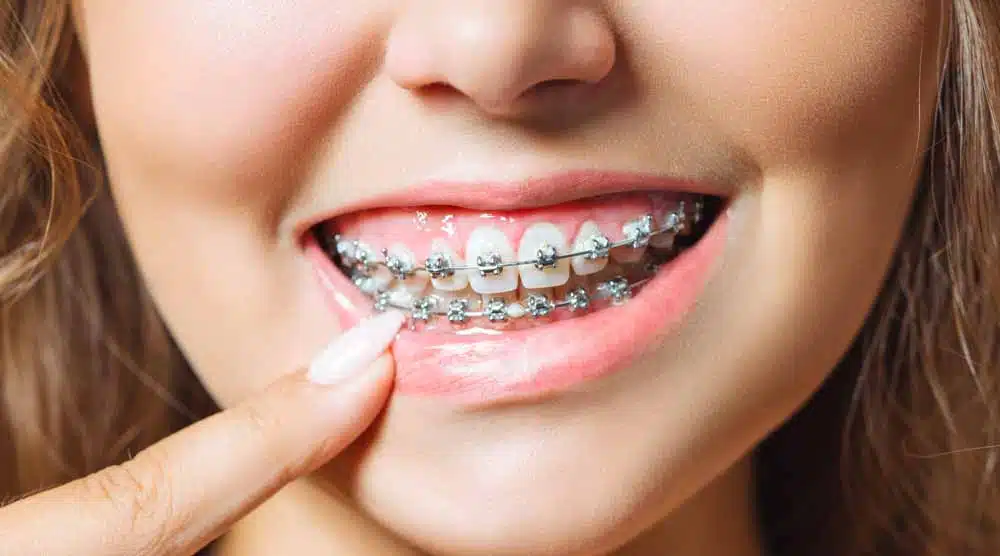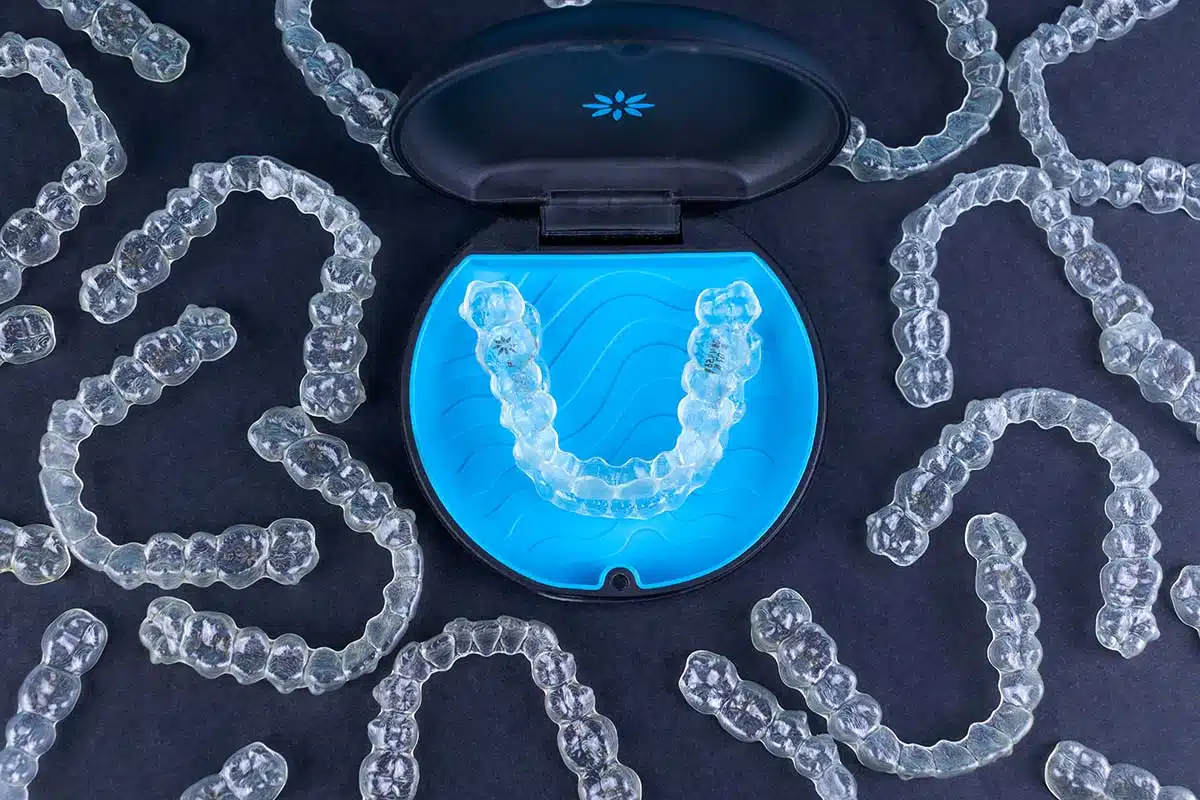
Invisalign Clear Aligners
CALL: (832) 702-2727
At Elara Orthodontics, we are committed to provide highest quality of dental care to our patients. We employ some of the nation’s top doctors and dental specialists in our state of art office located in Houston.
An Overview of Invisalign
Many patients visit the clinic wondering about the potential alternatives to traditional braces. One potential option that could be right is called Invisalign. Invisalign is a pain-free, stress-free clear aligner alternative to braces. Since these revolutionary trays first hit the market, they have helped millions of patients of all ages achieve the smile that they have always desired.
** Simulates Your Selfie **
Take a smiling selfie and we’ll show you what Invisalign® treatment can do for you. Click Here to Learn More

How Does Invisalign Work?
At Elara Orthodonticswe are committed to provide highest quality of dental care to our patients. We employ some of the nation’s top doctors and dental specialists in our state of art office located on Richmond .
Invisalign Process
Invisalign, Clarity Aligners, and other brands of clear aligners are all custom-made removable appliances. Using CAD-CAM technology, and based on the orthodontist’s prescription, a series of unique aligners are designed and manufactured for each patient. The treatment process described here is the same in all clear aligners regardless of brand.

To set up the teeth on the computer, the lab technician requires an accurate 3D model of the patient’s teeth along with X-rays and pictures. The 3D model is usually obtained by scanning the patient’s mouth with a special oral scanner at the orthodontist’s office. (Alternatively, a 3D digital model can also be derived from regular dental impressions.) The orthodontist sends a prescription to the lab technician explaining the treatment goals, where the teeth need to be placed, and any other specific consideration. Following these instructions, and using an advanced piece of computer software, the lab technician virtually moves the teeth and put them in the final desired position. The computer algorithm calculates how many aligners are required and how much movement can be done in every single stage. The initial treatment setup will then be passed to the orthodontist for evaluation and possible modifications. Usually, the orthodontist wants a change here and there. The treatment setup may go back and forth between the orthodontist and the technician until it becomes perfect. At this point, the orthodontist approves the fabrication of the aligners. The manufacturing and packaging of the aligners are mechanized and will be done in sterile production lines.
Now that the aligners are ready, you will be asked to come to the office for the initial fitting of the aligners. Your orthodontist will place the first pair of aligners in your mouth and make sure they fit perfectly. The orthodontist and the assistants demonstrate and help you learn how to correctly put on and remove your aligners. They also review with you the critical things you need to know about cleaning your teeth and washing your aligners. Usually, at this session, or shortly afterward, the orthodontist puts the attachments on your teeth. Attachments are small tooth-colored bumps that enhance the retention and engagement of the aligners with the teeth. As such, they increase the efficacy of the aligners in exerting the necessary forces upon teeth. The exact timing to put on the attachments depends on the case. Your orthodontist may set them up at the same appointment when you get your aligners for the first time. Alternatively, you may be asked to use the aligners without attachments for a few stages and then return to the office to put in the attachments.
Generally speaking, after you get your aligners, you can do most of the work at the convenience of your home. In contrast to braces wearers, Invisalign patients can go to the orthodontist office less frequently, and their adjustment sessions are also shorter. It is still critical to see your orthodontist once in a while to check if you are doing OK. The orthodontist will check if your aligners fit well. He or she also checks the tracking of your aligners and if your teeth are moving as planned. If any problem arises, your orthodontist can take the appropriate measure to address the issue before it is too late. That is why seeing your orthodontist at least every three months while getting Invisalign is a good idea.
After you are done with your initial set of aligners, you will go to see your orthodontist again to check the result. If you and your orthodontist are happy about the outcome, the treatment can be terminated at that point. Your orthodontist will remove the attachments, and you will receive retainers. However, it is not surprising to have an outcome that is short of perfect and does not 100% match the computer plan. In this situation, a new set of aligners need to be designed to take care of the imperfections. This process of additional aligners is usually called a refinement. It is common to have at least one refinement. (More complex cases may even require more refinements.) The additional aligners are usually included as part of the process in the initial contract. So, you do not need to pay an extra fee for the refinement.
Eventually, after the desired outcome is achieved, the active phase of treatment comes to an end. However, like any other orthodontic case, the patient still needs to wear retainers and be under retention care for at least a year. That is to ensure that the result is stable and to prevent teeth from relapsing toward their original position. When the Invisalign treatment is over, it is the best time to get any necessary cosmetic treatment such as bleaching or cosmetic porcelain veneers to perfect the smile if needed.
Is Invisalign the Right Choice for You
When Invisalign was first introduced in the 90s, aligners were relatively primitive. They were mostly reserved for mild crowdings and relatively minor treatments. However, with all the advancements in clear aligner technique in recent years, nowadays, your orthodontist can use them to do almost any type of treatment. That said, aligners are good at a particular kind of tooth movement and struggle at some others. For example, correcting a deep bite with Invisalign may not be as straightforward as doing the same with braces. Uprighting a big molar, or rotating a canine are other examples where aligners underperform. Invisalign, and aligners in general, work more effectively in patients with bigger teeth and may not track well if the patient’s teeth are too short.
As you can see, all these variables may make a patient’s treatment with clear aligners more or less effective. Depending on the type of tooth movement your treatment requires, and the anatomy of your teeth, your treatment may be more or less predictable. Most of the time, the aligners are as efficient as braces. Sometimes they are less powerful and struggle to achieve the same result compared to braces. In some cases, aligners have an advantage and bring additional benefits and possibilities to the treatment. Overall, it all depends on the situation. Your orthodontist is the best person to judge how predictable your treatment with Invisalign will be. You also need to consider the difference Invisalign makes in your lifestyle. Depending on your situation, you may be willing to trade efficacy and shorter treatment lengths with braces for the convenience or aesthetics that clear aligners have to offer. Or, you may want to choose an option that fits your budget better. Whatever it is, you can reach the best conclusion after you consult your orthodontist and consider all the facts.
At Elara Orthodontics, we pay special attention to your particular needs and priorities. Our goal is to provide you with the best treatment option that is uniquely tailor-made for you. That means getting the smile you want the way you desire.
Invisalign-Braces Combination Therapy
Sometimes it makes sense to combine braces and Invisalign treatment for a single patient. For example, consider a situation when Invisalign can ideally treat the upper teeth, but not the lower ones. In this case, the orthodontist can make a set of aligners only for the top teeth while putting braces on the lower. This was just an example. There are many other circumstances where orthodontists may like to combine both treatment techniques. Invisalign and braces can be done simultaneously as the previous example. Or, a small (partial) set of braces can come first, and be followed by Invisalign (or vice versa). This type of combination, whatever the case may be, generally can make the treatment more efficient or more convenient for the patient.
